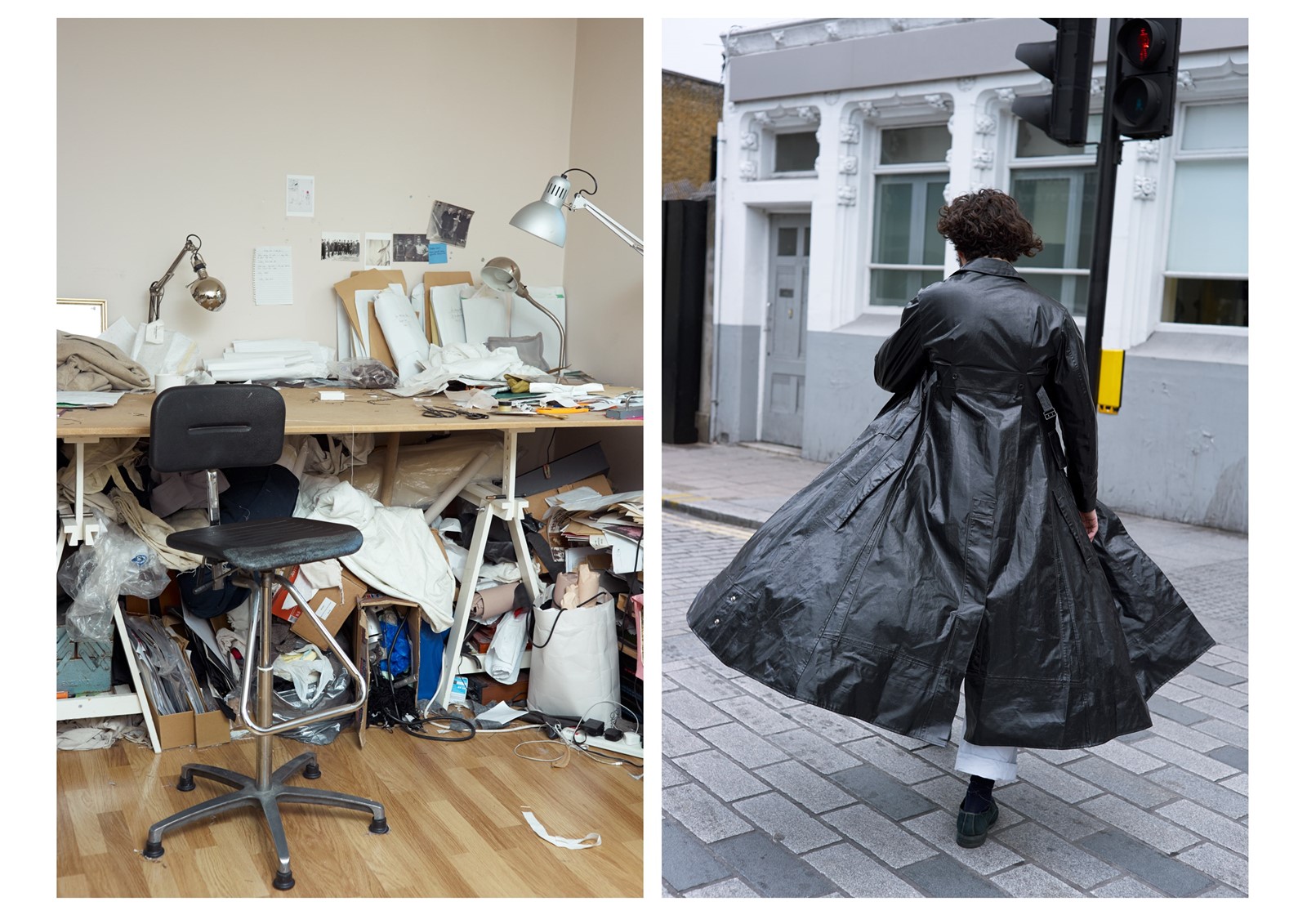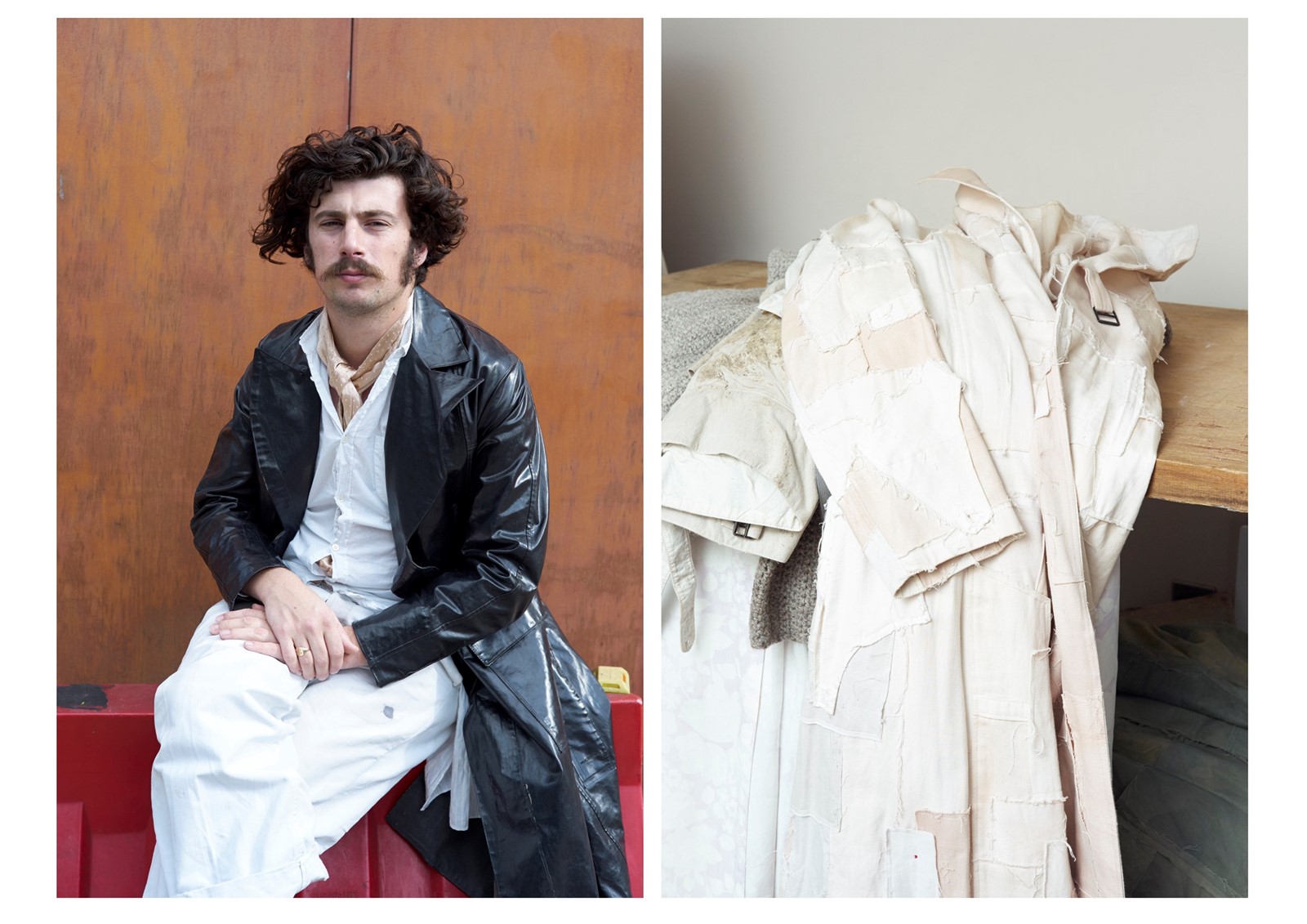The relationship between Britain and India is complicated, to say the least. Yes, there’s the shameful colonialism; the fight for independence in the form of bloody mutinies and state brutality; the ornamentalist perception of India as a charmingly exotic jewel; the influx of subcontinental immigrants arriving in England in the 1960s. More recently, there are more modern incarnations of Anglo-Indian culture that have culminated in chicken tikka masala, itself a cross-cultural hybridity born in Glasgow, which has since become the UK’s favourite dish. More often than not, sartorial meditations on the illustrious heritage shared by the two countries are reduced to rather hackneyed Bollywood shimmer-and-sequins, all satin brooch-pinned turbans and cliché blue-painted faces that nod to Hindu deities. For Indians, especially Anglo-Indians, it often feels inarticulate, lazy and simply offensive.
Thank god for John Alexander Skelton, the recent Central Saint Martins graduate who is presenting his second socio-politically tinged collection today. Skelton has been knee-deep in research for the last few months, getting inspired by the history of the divisive cotton trade between India and Britain that culminated in Gandhi’s khadi movement, which advocated the hand-spinning and handweaving of cotton as an act of anti-Imperialist protest. As a designer, Skelton is what Indians would call swadeshi, which refers to the act of self-sufficiency that Gandhi advocated as an alternative to supporting British products and imports. This is a designer who thinks about every seam and stitch, and who narrows down his search for the perfect components to the diet of the sheep it comes from – the seaweed-grazing Stornoway species have an unparalleled pale grey-hued fleece, he’ll have you know. Most of his materials are recycled and he is passionate about preserving British manufacturing and the skills of our nation’s artisans – not as an archaic act of patriotism but out of deeply invested interest in ethical production and crop-to-catwalk sustainability.

Themes of cross-cultural exchange and notions of Britishness permeate Skelton’s collection, which examines the changes in Anglo-Indian dialogue over the course of history. “One of the really interesting things I found is that prior to 1857, when there was a mutiny in India, the first British traders in the 1500s went in peace and would adopt Indian dress and culture,” he explains. “After the mutiny, which marked the start of the Raj, Britain became too greedy and didn’t trust Indians, which lead to them becoming more separatist and very British – there were instances of English people dying because they refused to change their dress when they were in India. The whole point is that two cultures intertwining while retaining their own identity is much more beneficial than two cultures being separated.”
“The whole point is that two cultures intertwining while retaining their own identity is much more beneficial than two cultures being separated” – John Skelton
Almost three quarters of Skelton’s soulfully rustic collection is naturally dyed with organic resources native to the UK, including rust and leaves foraged by Skelton in parks around London. There’s also satisfyingly heavyweight hemp, grown and spun in Yorkshire, which has been crocheted into knitwear and quilted into jackets, as well as sweeping Victoriana coats coated in latex (which is found in ten per cent of all flowering plants) as a nod to the Blanco-brushed boots worn by Indians in the 19th-century. Old grain sacks, a symbol of international trade, have been given the gift of reincarnation and transformed into Nemeth-esque patchwork coats that are unique in their farmyard appeal. The 26-year-old has collaborated with Stephen Jones on hats, creating Gandhi caps crafted from Indian newspapers, and has also experimented with embroidery for the first time – borrowing from Belgian 19th-century furniture fabrics. “There’s a lot of things from curtains,” he smiles. “There’s earrings made from coiled silver curtain weights and a worn-in, dulled-down gold embroidery that reminded me of the old photographs of maharajas that I had seen, but also feels a bit ecclesiastical.”
Skelton says that he was both appalled and fascinated by the pomp of the maharajas and the restrain of Victorian Englishmen in India and aimed to combine the silhouettes and fabrications of both. The major note heard throughout the collection, though, is the link between Cottonopolis, Manchester’s once-famous cotton industry, and Gandhi’s radical khadi, which Skelton has crafted into shirts and tailoring. Skelton came across images of Lancastrian mill workers standing in solidarity with Gandhi – and even welcoming him to their mill. “They all stood outside the mill and went against the people who they were employed by – big mill owners; industrialists – the same people that the Indians were protesting against and were starving as a result of.” One can’t help but feel that Skelton’s entire thought process is incredibly pertinent to the recent political landscape in Britain, which has culminated in widespread xenophobia and a separatist attitude, and has led to a spike in Brexit-triggered hate crime around the country. “It was at the back of my mind,” says Skelton. “We have not been a singular race for millennia. When you go to the markets or walk down the road in London, the mix of people is incredible and they are British and need to be seen as so by people outside London. This collection relates to the benefits of multiculturalism.”

York-born John works with brothers Ryan, 21, a student at Central Saint Martins and budding image-maker, and Danny, 24, who works in the city and is helping with the business side. He has decided to do a show away from the traditional schedule because he finds it so uninspiring, instead creating a magnificent set from recycled window panes that he has turned into an abstract conservatory in Hostem, where his clothes have found their natural home alongside mindful designs by Geoffrey B. Small, Yohji Yamamoto and Rick Owens. Surprisingly, Skelton is actively part of a generation of young designers who find contemporary fashion anodyne and search for solace in the 90s and early 00s era of John Galliano, Alexander McQueen and Jean Paul Gaultier.
What united Galliano, McQueen and Gaultier was a sense of narrative – the idea that each collection told a story or used historicism as a vehicle to express contemporary feelings. “The level of craftsmanship and showmanship is superb and they all have a level of historicism in their work which I share with them. It has a foot in the past and a foot in the present,” he enthuses. “The trend for not having a narrative has resulted in so much design getting watered-down and bland. What do you really take away from it? What’s the point in having a show?” Just as his last collection examined the working-class culture documented by Tom Harisson’s radical Mass-Observation study, so too does this brilliant sequel – and one can be sure that Skelton’s work will always examine the proletariat. “It crosses all sections of society, from the working class in the North to the ruling classes in India to the lower classes revolting against the upper classes in Britain. It’s looking at the landscape as one picture rather than separate scenes – perhaps that’s where the narrative comes in.”
